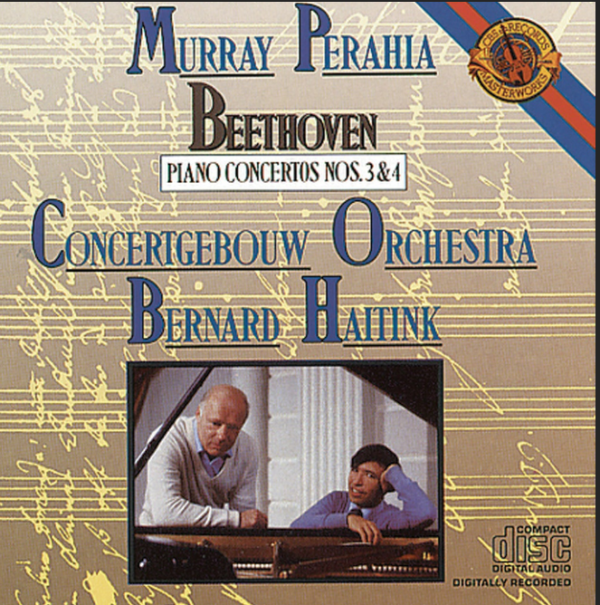Beethoven was a giant in classical music. 20 years ago, in 2005, I traveled to Bonn for a scientific meeting on AI where I presented an idea that gave me my 15 seconds of Andy Warhol fame. It turned out to be important to the future development of AI and it was extended and refined by researchers at Google Deep Mind and other labs. My reason to go to Bonn was to also pay homage to Beethoven by visiting his birthplace and the house where he was born.
We are listening to his magnificent Piano Concerto No. 3 with legendary pianist Murray Perahia and the Concertgebouw Orchestra conducted by Bernard Haitink on an early CBS recording. No one but Beethoven could have written this piece. The opening long movement is majestic, grand and sublime. Every note is chiseled to perfection. The slow movement takes your breath away in its sheer melody. It’s a beautiful recording undoubtedly helped by the acoustics of the Concertgebouw, one of Europe’s finest concert halls.
Beethoven wrote this piece around 1800. He was already going deaf. He had just moved to Vienna, like Mozart, where he lived till his death in 1827. This music is that of a young composer at 30 with his greatest musical compositions yet to come. The ink was barely dry on his First symphony. He had published his first collection of string quartets, Op. 18. And yet, listening to this piece, you are riveted by his command of the music. Beethoven would write two more piano concertos, the last one called Emperor. Beethoven hated monarchs and emperors. His great Eroica Symphony 3 was first dedicated to Napoleon. When Napoleon declared himself an emperor, Beethoven angrily scratched out the dedication. Later Napoleon would fire his cannons on Vienna, a deafening and horrendous fusillade that Beethoven lived through.
Recent DNA scholarship has finally revealed by analyzing a tiny lock of Beethoven’s hair that he had extremely high levels of lead in his body. Those days, lead vessels were commonly used to store wine. Beethoven drank a lot of cheap wine. One wonders if that was related to his deafness and later death. No matter. His musical legacy has lived on for over 200 years and remains a towering accomplishment. Listening to the pounding final movement, we hear both grace and power, of melody and grandeur, of simplicity and complexity, woven together in a way that was his unique talent. No wonder composers like Johannes Brahms who came after him, and like Beethoven, moved from playing in seedy taverns in Hamburg to Vienna, shuddered at the thought of following the great master.
A great recording of a great piece of music. When you’re feeling out of sorts, listen to Beethoven. It always cheers me up. If he could excel with his disability, I tell myself, what am I complaining about?
































